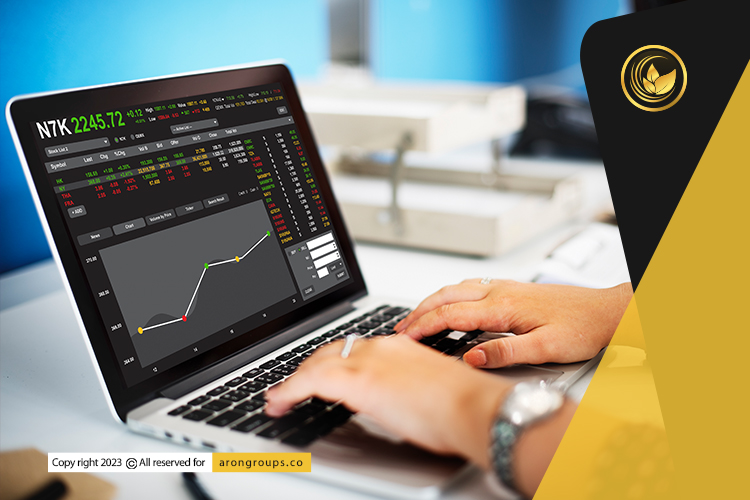Setting up and Mastering Google Merchant Center Feeds
E-commerce has risen much more than most people expected in the last few decades. There are now over a thousand large e-commerce companies across the globe.
While existing technology makes it easier for merchants, it takes proper understanding and mastery to get the most out of them. So, how exactly does it work?
For platforms like Google, you want to make sure you maintain efficient Google Merchant Center feeds. There’s a lot to learn, so here’s a guide on how to set up and master it!
A Quick Guide to Setting Up a Google Merchant Center Feed
Before you jump into learning how to post and manage your products, you should set up an account. This way, you can also benefit from it by linking to other Google service accounts.
Here’s a brief step-by-step process and how to do it:
Create a Google Merchant Center Account
Creating a Google Merchant Center account is the first step towards leveraging your brand on the platform. To create one, you need to first log into your Google account or sign up for one.
Then, open Google for Retail and click on the “Sign Up for Free” button. Input the necessary details and agree to the terms of service.
Add your business information and verify your website, then set up the rest of the data, like shipping and sales tax.
Set Up Your Product Feed
How you set up your Google Shopping feed affects the results you get once you post products on the platform. So, you want to pay close attention to how you organize it.
Make sure your product details are accurate, including the title, description, price, availability, and other attributes. It’s important to make sure you include any crucial information about the product, like electrical requirements or ingredients.
Review each product and their info before you complete it to ensure they have the correct details, photos, and titles. You should also check if they follow Google’s requirements to avoid getting flagged or rejected.
Test and Optimize Your Feed
When you have everything set, you want to see if it works well. Test your feed and see how it shows on the page.
You may want to optimize it before you finish up to improve its visibility and make it appear more attractive to buyers. For example, keep a separate list of the data specifications to make the actual descriptions sound catchy.
Note that optimizing your feed shouldn’t be a one-time thing. Consider doing this as often as possible to get the most out of the platform.
Best Practices for Optimizing Your Google Merchant Center Feed
You can optimize Google Merchant Center feeds in several ways. In addition to adjusting the product listings, here are a few other tips you can consider:
Use a GTIN
If you post products that other sellers also have, you may want to include the Global Trade Identification Number or GTIN in your listing. It allows the following benefits:
- Correct product details
- Won’t conflict with competitors
- Increase impressions
- Prevent counterfeits
- Allow customers to make comparisons
Optimize Titles and Descriptions
You want to focus product feed optimization on optimizing each product product’s titles and descriptions. This way, your ads become relevant to your audience’s searches. A quick tip is to include keywords in the title to make sure it comes up in the results.
Try Repricing Strategies
Competitive pricing can have a big impact on your Google Shopping feed. It helps run price checks on similar products and see how yours works compared to your competitors. It also lets you decide how you should adjust your pricing to get good returns while keeping it attractive to your audience.
Utilize Built-In Features
You may want to use the platform’s built-in features to ensure the changes you make work according to its structure. For example, when you place ads, use a tool that allows you to connect your merchant center account to Google ads. You can also create custom labels on your listings along with the ones provided.
Why You Should Use Google Merchant Center Feed Management
How you manage different Google Shopping feed types will vary. But in most cases, you want to make sure you follow the proper requirements and guidelines when operating it.
Even so, you want to focus on making sure you master how to manage it. This way, you can open your brand to more opportunities and make better sales.
Some of the built-in features allow you to check your product listings. You can check the data quality tab to find any issues that could affect your feed. It’s also good to regularly go through it and review your feed to increase product visibility.
Tips to Overcome Challenges in Google Merchant Center Feed
Errors are common when you manage e-commerce across different platforms. Each provide different features and requirements, so it takes a while to get used to.
Even so, you want to know how to avoid these to get the most out of them. Here are a couple of tips you can try:
Keep Product Data Accurate
When setting up your feed and listing products, you want to be sure all the information you include is accurate. It includes everything from price and descriptions to images.
If you discontinue items, remove them from the feed to prevent a potential loss of sales. Moreover, add new products only when everything is ready to go and keep information on existing ones up-to-date.
Classify Products Well
When you set up your feed, be careful with organizing and classifying your products. It can affect how your audience finds your products, so you want to be sure it’s in the right tags and places.
At the same time, you must keep data accurate and only include details that are sure and necessary to the product. Otherwise, potential customers may have trouble trying to understand it.
Google also decides which products to display on search results according to these tags. So, focus on keeping it accurate and taking your time to make sure you don’t overlook anything.
Follow Google Shopping Requirements
It’s essential to make sure you follow their shopping feed requirements before posting products. If you fail to do so, Google could end up flagging your listings, noting them for violation, or keeping them in review.
Always read through their policies to make sure everything is in order before you submit them. If you aren’t sure about some details, consider contacting the support team before you proceed.
Be On the Lookout for Discrepancies
Whether you have a couple to a hundred products, always be on the lookout for errors and discrepancies. It could be missing information, outdated details, incorrect data specifications, and more.
A quick solution for this is to practice updating your products regularly, whether the change is big or small. This way, you can maintain consistency and accuracy, improving the chances of reaching more customers.
Techniques for Harnessing the Full Potential of Google Merchant Center Feeds
To bring the most out of your Google Merchant Center feed, you may want to keep the following techniques in mind:
Optimize Your Feed
One of the biggest keys to making sure you maintain an effective retail platform on Google is keeping it optimized. It can be done by using SEO on descriptions, keywords on titles, and choosing detailed product photos.
The more you keep your feed optimized, the better the results you get. It helps in boosting your products on the results page and makes them look more attractive to your customers.
Note that you can also consider how you organize product data aside from the content itself.
Practice Consistency
Consistency is vital for any business, especially if you want to keep customers coming in and retaining them. It applies to how you manage your feed and the services you give.
For example, consider investing in active customer service. This way, your customers will know that you will attend to their concerns in no time. Another way is by updating your products as often as possible rather than only when it’s necessary.
You can also offer customers unique deals that make you stand out from your competitors.
Use Different Attributes
Make sure you use the different attributes and features provided by Google themselves. When you do so, it improves the performance of your product feed and boosts it effectively.
At the same time, it ensures you’re following Google’s guidelines to keep your products from going through errors.
Consider Getting Assistance
You may want to consider getting assistance with managing your feed. One way to do so is by looking up a Google Shopping Agency to improve product campaigns, troubleshoot errors, and analyze overall success. They can also help with managing and building your feed.
Boost Your Brand by Mastering Google Merchant Center Feeds
A great way to gather more customers for e-commerce is to consider different platforms. This way, you gain access to different customer bases and features.
With Google Merchant Center feeds you can reach regular Google users and put up your products in the search results. Just remember that the key to it is understanding and mastering how it works.
You can learn more by checking out the rest of our blog.






